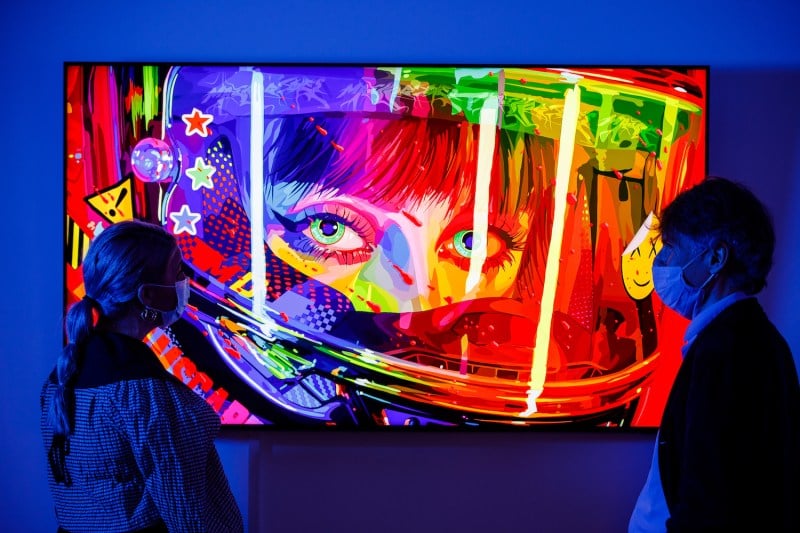NFTs, or Non-Fungible Tokens, have emerged as one of the most revolutionary concepts in the swiftly evolving world of blockchain and digital assets. A multi-billion-dollar industry has emerged from a niche venture that combined art and technology. Ownership, value, and creativity have been redefined in the digital age by the world’s largest NFTs, which have also captivated the imagination of collectors. However, how were these digital treasures created? What was the catalyst that transformed them from mere pixels into what is now widely regarded as digital gold?
**The Initial Stages: Blockchain and Digital Art Collide**
The narrative commences with the aspiration to establish digital scarcity. In contrast to corporeal art, digital files are capable of being replicated indefinitely, which complicates the process of determining ownership or uniqueness. The initial pioneers sought to resolve this issue by utilizing the immutable ledger of blockchains to verify and establish ownership of digital works.
One of the first viral NFT initiatives was introduced by CryptoKitties in 2017, which combined collectible digital cats with unique attributes on the Ethereum blockchain. This experiment illustrated the potential of NFTs; however, it was only the beginning.
**CryptoPunks: The Original Blue-Chip NFTs**
A significant milestone was achieved with the introduction of CryptoPunks in 2017. This collection of 10,000 unique 24×24 pixel art characters, which was developed by Larva Labs, rapidly garnered attention due to its scarcity and originality. CryptoPunks became status symbols within the crypto community, which symbolized early adoption and digital identity.
These characters experienced a significant increase in value over time, resulting in their sale for millions of dollars and their status as some of the most influential and expansive NFTs ever produced.
**The Ascension of Profile Picture Collections**
The concept was further developed by initiatives such as Bored Ape Yacht Club (BAYC) and Cool Cats in the wake of CryptoPunks. These collections integrated art, community, and utility, providing proprietors with exclusive events, merchandise, and digital rights.
In particular, BAYC evolved into a cultural phenomenon, drawing the attention of influencers and personalities. Its success underscored the potential of NFTs to transcend the realm of art and serve as investment assets and social status markers.
**The Reasons Why the Largest NFTs Are More Than Just Art**
The combination of art, community, and utility is what distinguishes the largest NFTs. Owners acquire membership in exclusive organizations, access to experiences, and occasionally revenue streams in addition to possessing a digital image.
Additionally, the blockchain resolves long-standing challenges in the conventional art industry by ensuring authenticity and provenance. Collectors, investors, and institutions equally have been drawn to this additional layer of trust.
**From Collectibles to Digital Gold**
The perception of NFTs changed as the market matured. These tokens were acknowledged for their financial potential as well as their cultural significance.
Headlines were generated by high-profile sales, which resulted in pieces selling for millions and increasing mainstream awareness. In a new digital economy, certain investors began to regard the top NFTs as “digital gold”—rare assets that could be used to diversify portfolios and store value.
**Steps to Begin Your Own NFT Journey**
Although certain NFTs are priced at a premium, the market provides opportunities at every level. Tokens that are both innovative and affordable are still being produced by emerging artists and initiatives.
The history and significance of the largest collections can be a valuable source of context for those who are interested in collecting or trading NFTs. Researching projects, engaging with communities, and starting small are essential stages in navigating this exciting space.
**Conclusion**
The world’s largest NFTs have evolved from basic digital artworks to highly sought-after assets that combine finance, technology, and creativity. Their origins serve as a reminder of the influence of innovation and community in the development of novel value propositions.
As NFTs continue to develop, they have the potential to redefine ownership and culture for future generations, transforming digital creations into enduring treasures or, as some now refer to them, digital gold.

Leave a Reply